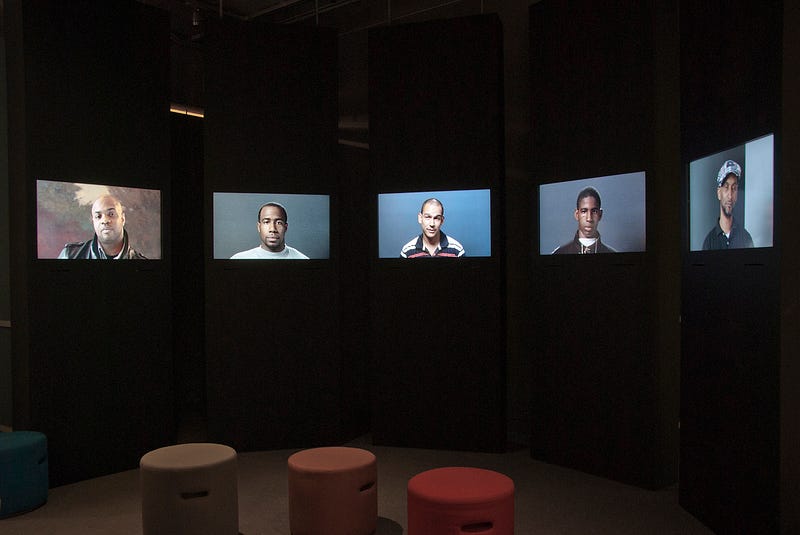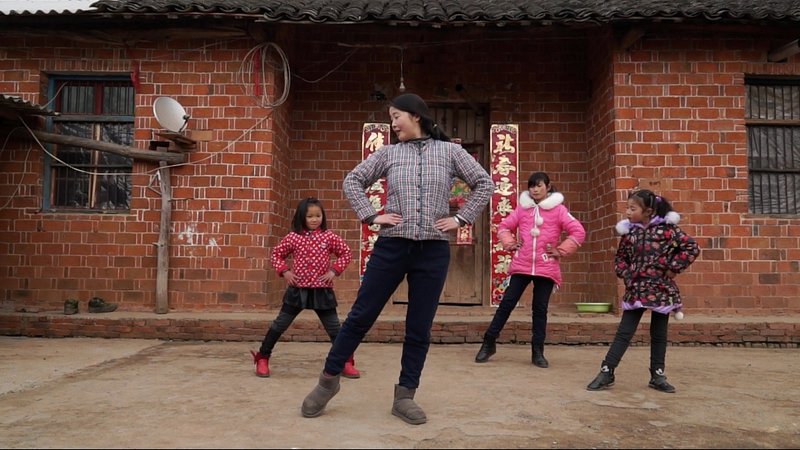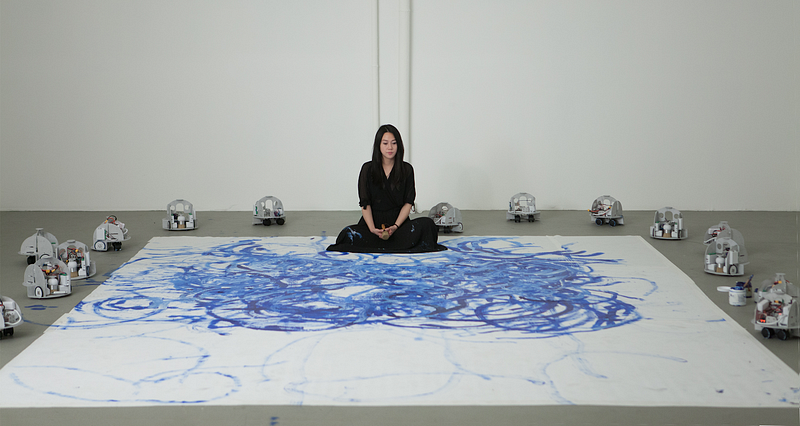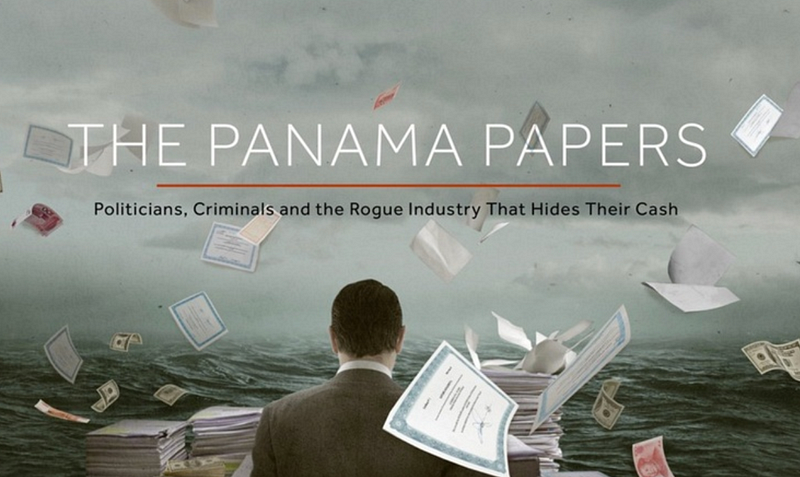
On June 11, 2019, the Co-Creation Studio at the MIT Open Documentary Lab published Collective Wisdom: Co-Creating Media within Communities, across Disciplines and with Algorithms. This landmark field study was authored by Katerina Cizek and William Uricchio, with co-authors Juanita Anderson, Maria Aqui Carter, Detroit Narrative Agency, Thomas Allen Harris, Maori Holmes, Richard Lachmann, Louis Massiah, Cara Mertes, Sara Rafsky, Michèle Stephenson, Amelia Winger-Bearskin, and Sarah Wolozin.
Collective Wisdom brings together knowledge from conversations with 166 practitioners/scholars, 222 readings, and 251 media projects. It highlights trends, opportunities, and challenges to help advance the understanding of creative efforts outside the limits of singular authorship.
Collective Wisdom lives online as an interactive report, allowing readers to contribute their own knowledge to dynamic community discussions. In this issue of Immerse, we’re launching a series on the topic, and will be publishing related articles through December. In collaboration with Immerse Editor Jessica Clark, we’ll feature excerpts from the research, plus bonus content and original responses. We see this series as an extension of the co-creation of the report itself, and look forward to working in tandem with Immerse readers and stakeholders from the field to continue the conversation.
Below, excerpts from the report present an overview of our findings and recommendations for the field. This piece mirrors one of the web’s seminal co-creative processes: the Frequently Asked Questions (FAQ) page.
What are the report’s key takeaways?
- Co-creation and collective media practices are remarkably commonplace and yet invisible, underfunded, and often underreported.
- All over the world, journalists, artists, and documentarians co-create within communities, across disciplines, and with algorithms to make new forms of media that align with scientific discovery and social movements in ways that are not attributable to one sole author.
- Co-creation is described by its practitioners as an antidote to the Trump effect, and the cult of the individual, to confront the large issues of this historical moment through collective action.
What do we mean by “co-creation?”
Co-creation offers alternatives to a single-author vision, as is common for books, films, or art pieces. Instead, co-creation involves a constellation of media production methods, frameworks, and feedback systems. In co-creation, projects emerge from a process, and evolve from within communities and with people, rather than for or about them. Co-creation also spans across and beyond disciplines and organizations, and can also involve non-human or beyond human systems. The concept of co-creation reframes the ethics of who creates, how, and why. Our research shows that co-creation interprets the world and seeks to change it through a lens of equity and justice.
The report tracks different types:
- Co-creation within communities, in-person With community based co-creation, central discussions in our interviews revolve around power dynamics and relationships: who decides the terms, what media is made, by whom, why, and who benefits. Key concerns we identified include the hidden, unfunded work of co-creation. Artists of colour and other historically marginalized groups are often burdened with multiple responsibilities not recognized in formal media-making.
- Co-creation online and with emergent media Online, the blurred boundaries between makers, subjects, and audiences afford new opportunities, but also open up new risks for questions of ownership, governance, and authority. Distinct questions arise for journalism in particular about accountability and trust. Additionally, in projects involving emergent media, co-creators often prioritize training, literacy, and community access to expensive and complex technologies, which are considered crucial for inclusion and equity.
- Co-creation across disciplines and beyond In co-creation that crosses disciplinary lines, institutions, organizations, scholars, and makers embark on parallel paths of discovery (rather than privileging one discipline’s priorities over the other). Often this requires long timelines and joint spaces. Importantly, these projects are also frequently partnered with communities outside the academy. Many consider that co-creation resides beyond an “inter-disciplinary space” preferring the terms trans-disciplinary or even anti-disciplinary.
- Co-creation between humans and non-human systems In a more speculative type of co-creation, human artists, scientists and provocateurs are also examining their relationships with living systems, or with artificial intelligence as well as technological infrastructures. These process, too, de-center single authorship but with differing questions about the definition of agency and singularity. What does co-creating with non-human systems look like? How are humans increasingly entangled within larger systems and infrastructures?
How did we approach this field study?
We used a hybrid approach, incorporating one-on-one interviews with key practitioners and stakeholders, as well as group discussions. Overall, we conducted 99 individual interviews and held ten group discussions with a total of 166 people working in media and related fields. We also conducted a literature review and gathered relevant lists of 230+ readings and 250+ projects. We invited co-authors to write chapters, and we embarked on an extensive participatory reviewing and editing phase. Recognizing that this approach is not comprehensive, Collective Wisdom will live online as a dynamic study that furthers the conversation and encourages more conversations.
What did we discover?
Co-creation has risks: While co-creation has a proven track record of brokering divides and emerging as more than the sum of its parts, it can also be abused. Interviewees and participants enumerated several risks across the research. Co-creation can serve to:
- Threaten editorial integrity and artistic independence
- Heighten expectations of trust, commitment, and time on all sides
- Marginalize makers and work to the less-respected space of “community media,” especially artists of color
- Have unintended consequences, especially online and with artificial intelligence (AI)
- Exploit labor, steal ideas, and profit from participants
- Be co-opted for the marketing of projects that reproduce power inequities
Practical lessons from the field
Several recurrent key practical lessons emerged from our conversations with co-creators. The following approaches help to both facilitate co-creation and mitigate risks. Co-creation:
- Begins with deep listening, fostering dialogue and learning rather than coming in with preset agendas.
- Involves identifying common principles and negotiating terms and benefit agreements on individual, organizational, and community levels. These terms are determined beforehand to ensure equity and to clearly spell out decision-making, ownership, and governance issues.
- Involves balancing the project’s process with the outcomes, rather than pre-defining relationships and processes by the deliverables.
- Fosters diverse, alternative forms of narrative structures. Co-creators can shed linear, conventional formats, and embrace non-linear, open-ended, ongoing, multi-vocal and circular, spiral forms.
- Centers healing, safety and sustainability by employing trauma-informed practices. Co-created media projects are deeply connected to the well-being of the participants and community rather than repeating and reproducing trauma for the benefit of audiences. Ritual replaces performance in co-creative practices.
- Requires appropriate forms of leadership, language, and technology. Providing community access to tech and media digital literacy is core to many co-creative projects.
- Demands alternative models of funding, evaluation, and impact.
- Involves always being iterative.
What are some key examples of co-created media projects?
These landmark co-created projects are only a few of the contemporary works highlighted in this report, along with the database [link] of 260+ projects and programs we gathered to illustrate the diversity and abundance of co-creative approaches in media-making.
 Image courtesy of Question
Bridge
Image courtesy of Question
BridgeQuestion Bridge
A documentary project in which the co-creators interviewed black men across the US; these men were invited to record questions for subsequent interviewees. The project has taken many forms, including a 5-channel video installation, book, mobile app, and community events.
 Photograph courtesy of the Folk
Memory Project
Photograph courtesy of the Folk
Memory ProjectThe Folk Memory Project
Based in Beijing China, the Folk Memory Documentary Project collective invites young filmmakers to visit their “home” rural communities to document the historical experiences of relatives and elders during the Great Famine of 1959–61. This body of work is growing with annual returns by the filmmakers, and the collection now includes over one thousand interviews. The collective performs the recordings to live audiences, using projection, dance and multimedia.
 Image Courtesy of Sougwen
Chung
Image Courtesy of Sougwen
ChungDOUG
Artist Sougwen Chung co-creates paintings with a robot in front of live audiences. The robot is prompted by both the artist’s actions and live data from urban surveillance systems.

The Panama Papers
The Panama Papers was a global collective of investigative journalists from 107 global news organizations who joined forces in 2016 to interpret the largest data leak in history. It brought down governments, presidents, and it marked the biggest effort ever in journalism to collaborate rather than compete.
What are our recommendations?
- Research More research should be conducted, by many different stakeholders, in order to map and understand the operations of co-creation in a culture predisposed to individual ownership, accumulation, and appropriation. We need to understand the implications of co-creation in a society of systemic inequity and in an era of fast-changing biological and technological developments. We need to continue to learn from historical and current human practices by studying and understanding co-creation: in business/organizational models; in diverse communities, beyond the U.S. and Canada; in ownership and intellectual-property models, such as art collectives, co-operative economic models, transdisciplinarity models and matchmaking; in art and AI; in deep fake and synthetic media; and in new forms of convening.
- A Library of Toolkits and Curricula There is a need to create resources for teaching, sharing, and learning co-creative models. This involves co-creative strategic planning that will create networks and hubs to document, organize, and create an accessible library of existing toolkits (contracts, worksheets, community agreement forms), best practices, and instructive failures through modular curricula. These networks and hubs should include media-makers, community groups, non-profits, private companies, public institutions, media institutions, and universities. These resources are intended for professional development as well.
- Structural Changes at Institutions More research and testing within public and private institutions must be undertaken, by acknowledging (and funding) process, not just product; and modes of creation beyond traditional authorship. This will develop pathways for co-creative practices internally, and methods to reach communities that already co-create. These processes must be ethical, just, transparent, and equitable.
- Spaces for Incubation and Production More sustainable programs, fellowships, workshops, streams, and incubators should be developed to facilitate co-creative projects that honor the processes, multiple partnerships, and lengthy time frames involved. The governance of these spaces and the projects needs to be interrogated. These sites need to provide adequate resources, mentors, cross-disciplinary supports, witnesses, and intentional healing. Trauma-informed practices should be implemented.
- Networks for Distribution Spaces and networks for distributing co-creative projects need to be supported, including community centers, libraries, alternative spaces, schools, festivals, universities, and among allied funders engaged in projects.
A closing thought:
‘’Making” can divide, alienate, and exploit — or it has the potential to be inclusive, equitable, and respectful. The latter conditions are far more conducive to the collective efforts it will take to address the immense challenges of structural inequality, exponential population growth, the anthropocene, and the ever-diminishing resources that follow in their wake. In reaching beyond the mere sum of our collective intelligence, we stand a chance of finding our collective wisdom. Co-creation offers hope.
This article is part of Collective Wisdom, an Immerse series created in collaboration with Co-Creation Studio at MIT Open Documentary Lab. Immerse’s series features excerpts from MIT Open Documentary Lab’s larger field study — Collective Wisdom: Co-Creating Media within Communities, across Disciplines and with Algorithms — as well as bonus interviews and exclusive content.
Immerse is an initiative of the MIT Open DocLab and The Fledgling Fund, and it receives funding from Just Films | Ford Foundation and the MacArthur Foundation. IFP is our fiscal sponsor. Learn more here. We are committed to exploring and showcasing media projects that push the boundaries of media and tackle issues of social justice — and rely on friends like you to sustain ourselves and grow. Join us by making a gift today.